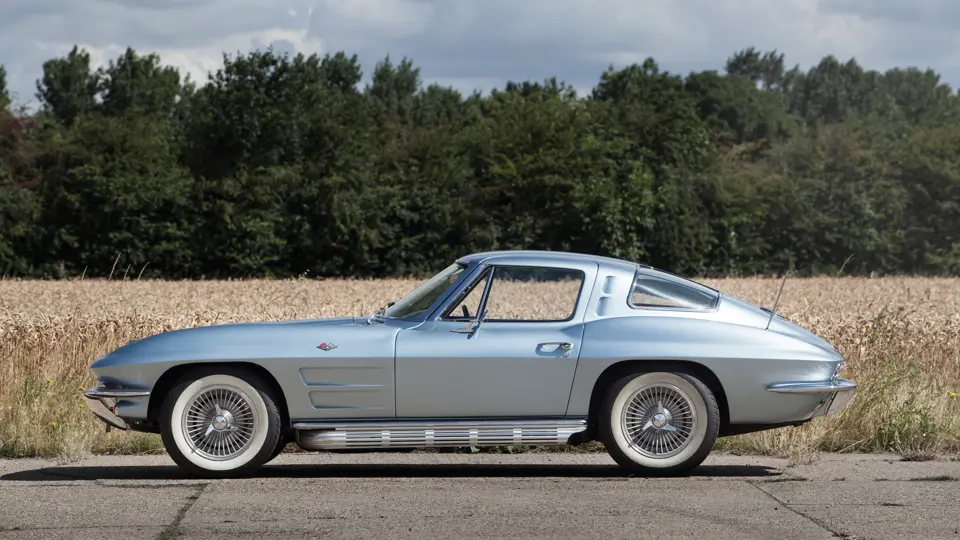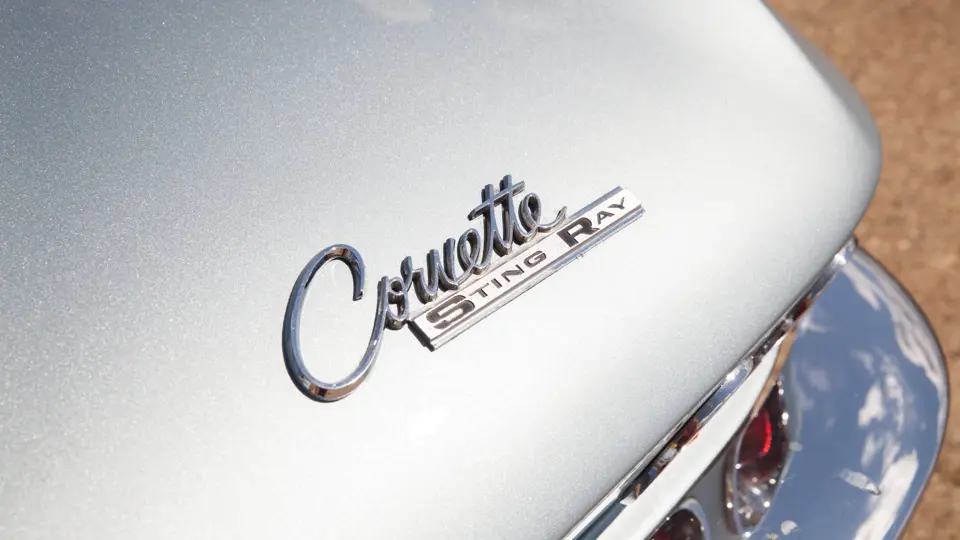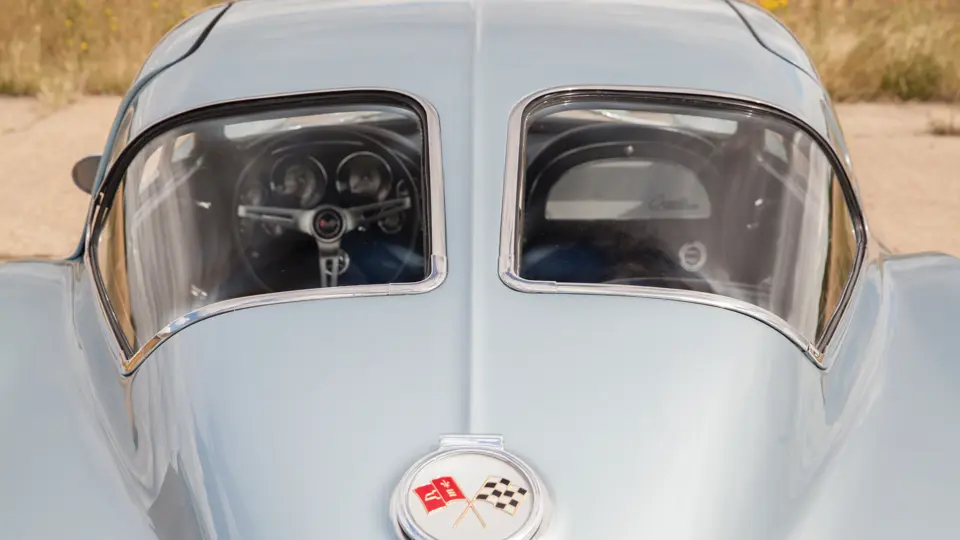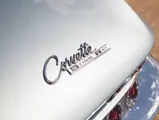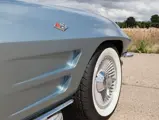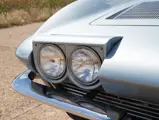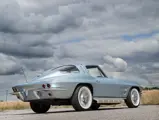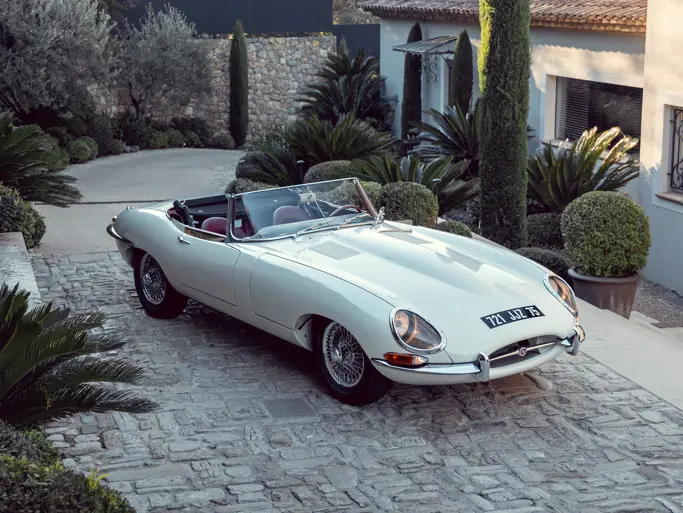250 bhp, 327 cu. in. OHV V-8 engine with a Carter four-barrel carburettor, four-speed manual transmission, four-wheel independent suspension, and four-wheel hydraulic drum brakes. Wheelbase: 2,489 mm
Nineteen sixty-three was a big year for the Corvette. It was 10 years after the model’s premiere, and Chevrolet was releasing the second generation of “America’s Sports Car” to great acclaim. With the sexy aerodynamic design penned by Bill Mitchell and Larry Shinoda, the Corvette, now dubbed the “Sting Ray”, boasted an independent rear suspension, optional power steering, power brakes, and air conditioning. Also, for the first time ever, Chevrolet offered the Corvette in both coupé and convertible body styles, with the coupé defined by a stylistic rear split-window. Whilst the basic design of the coupé would last until 1967, the “split-window” would not, and it is the signature identifying feature of closed 1963 Corvettes today.
The all-new Corvette generated immediate acclaim, with Motor Trend testers remarking: “We thought the old model cornered darn well, but there’s no comparing it to this new one”. Road & Track stated that the 1963 Corvette “will know few peers”. The model has become something of a design classic, as it is renowned for its combination of European-inspired high style and American brawn, and it remains coveted by Corvette collectors as a landmark in the history of what may be Chevrolet’s most important model.
The striking Split-Window Coupé offered here is identified by its chassis number as the 3,110th Corvette produced for the 1963 model year. The trim tag, still present under the bonnet, identifies it as having been built in November 1962 with vinyl upholstery, which remains intact in the very original interior, and Daytona Blue paint. The body has since been refinished in its present shade, the year-correct Silver Blue. Options and accessories on the Chevrolet include an original Delco AM radio, the standard full complement of dashboard gauges, the desirable off-road side exhaust, and the important cast-aluminium knock-off wheels, which are shod in wide whitewall tyres. Its odometer is showing less than 4,000 miles, which can be assumed is mileage covered since restoration.
The ’63 Split-Window is a landmark of American automotive design. The Sting Ray is simultaneously muscular and sensual, and its design perfectly mimics its personality, as it is both a capable sports car and a wonderful grand tourer. This car is just as ideal for the Cote d’Azur as it is for the M1.




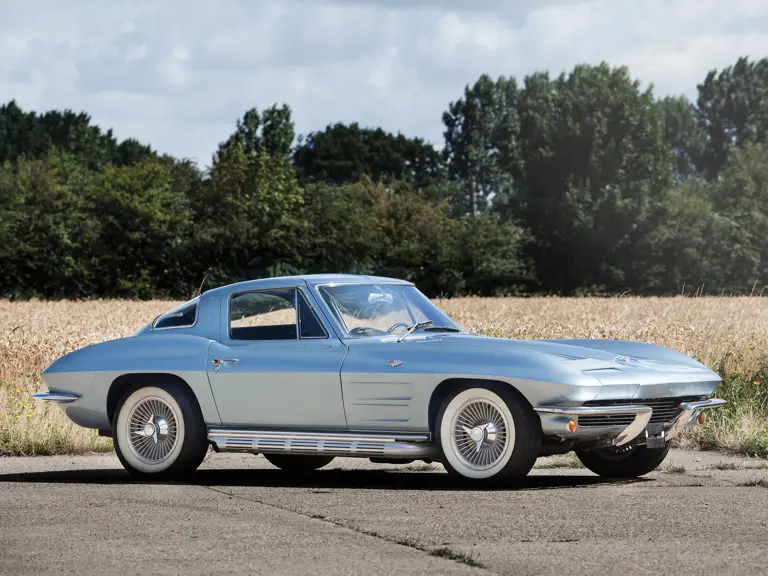
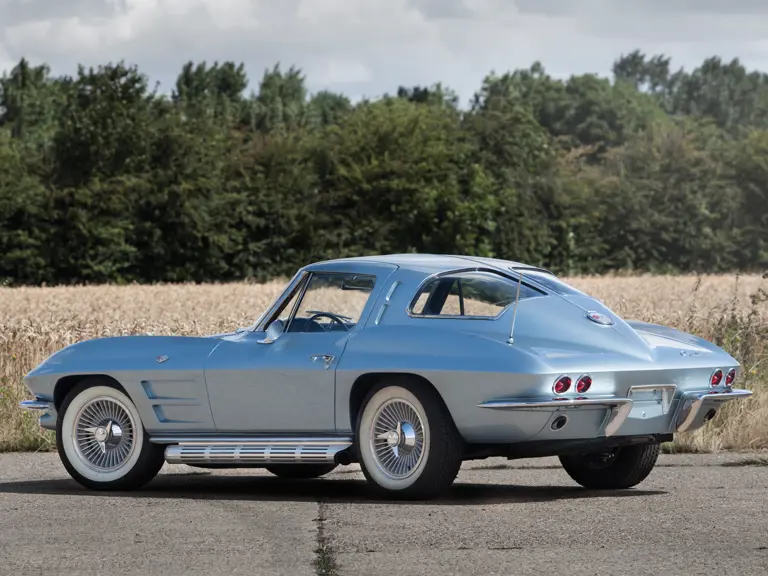

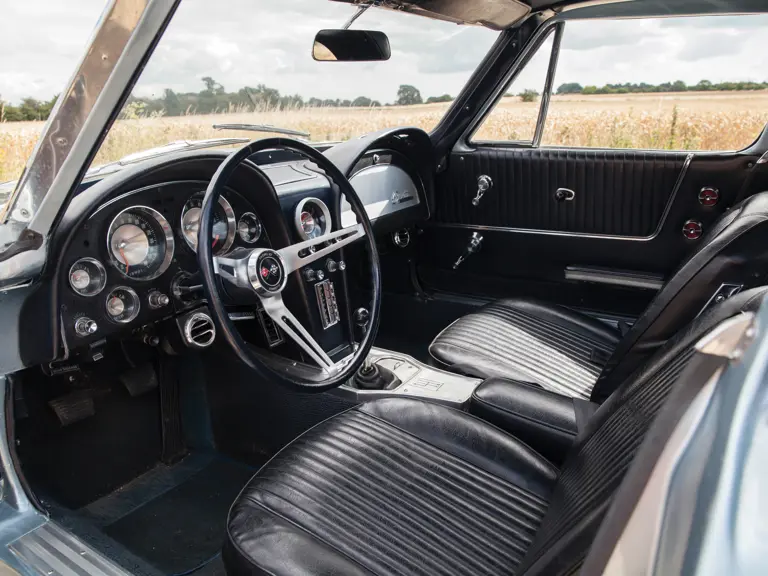
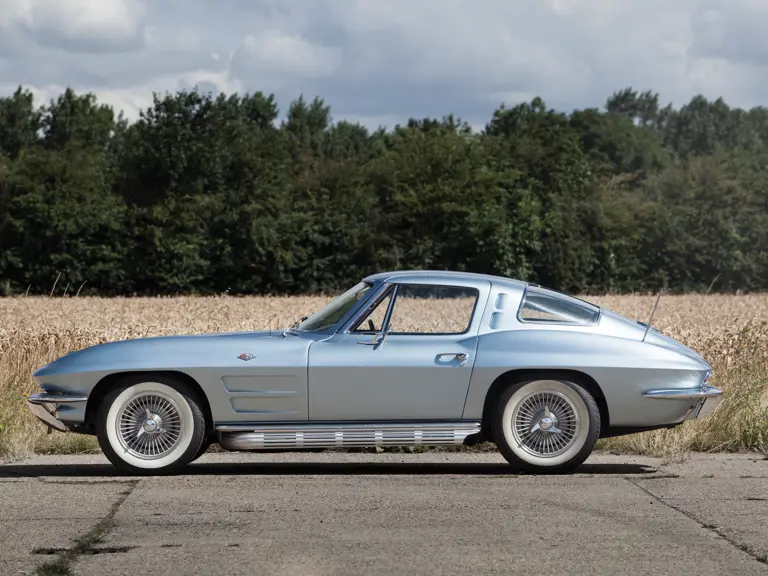

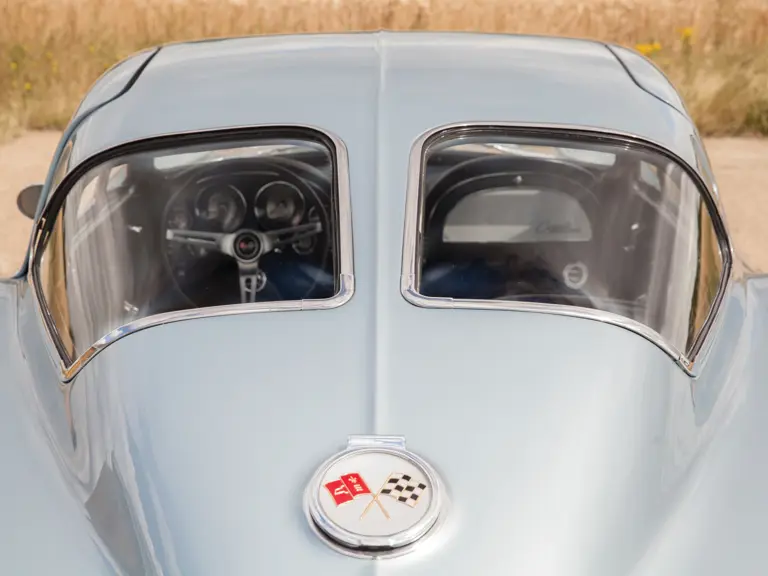
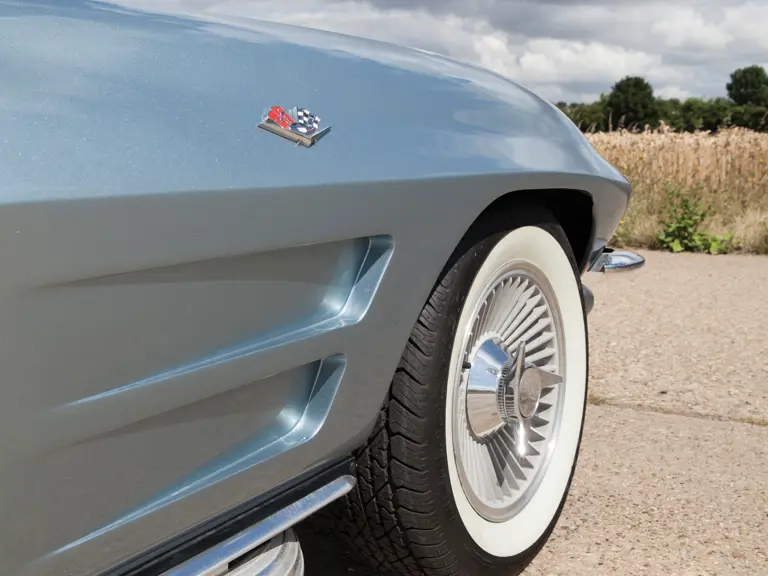
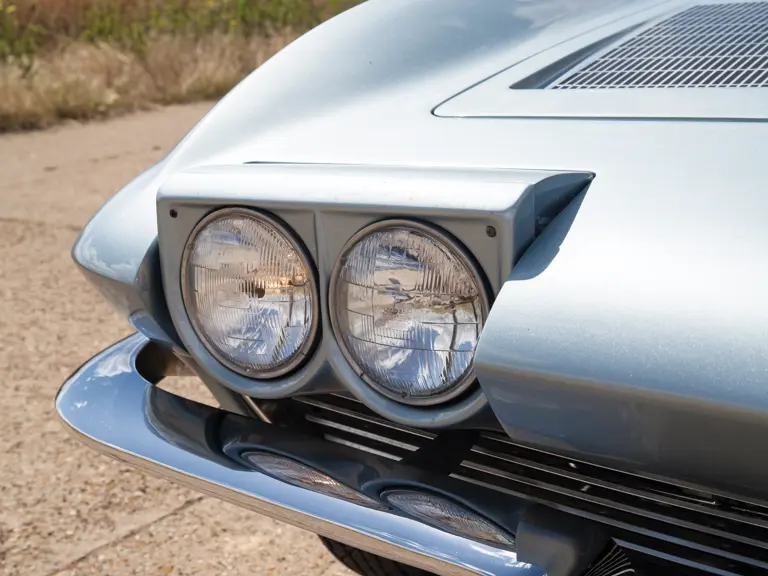
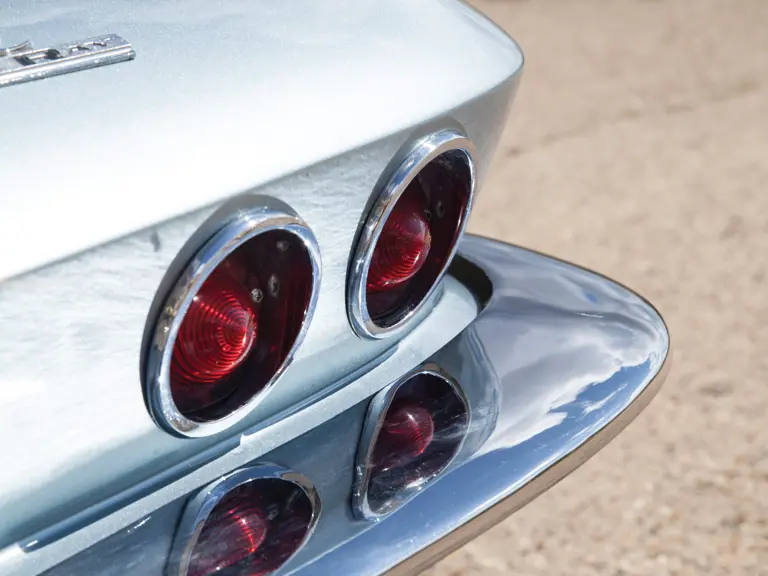
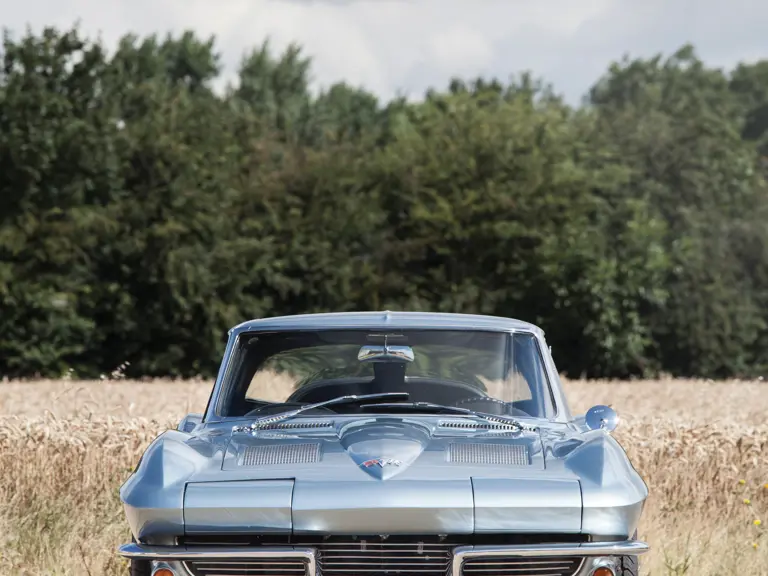
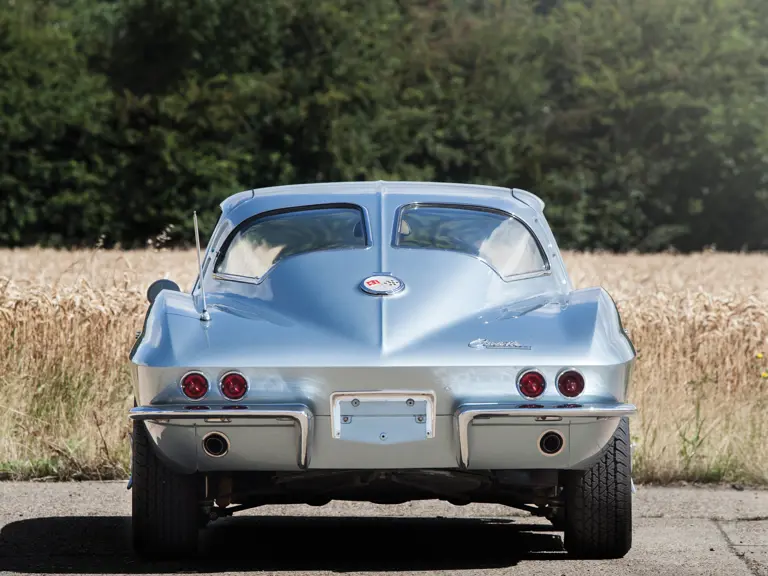
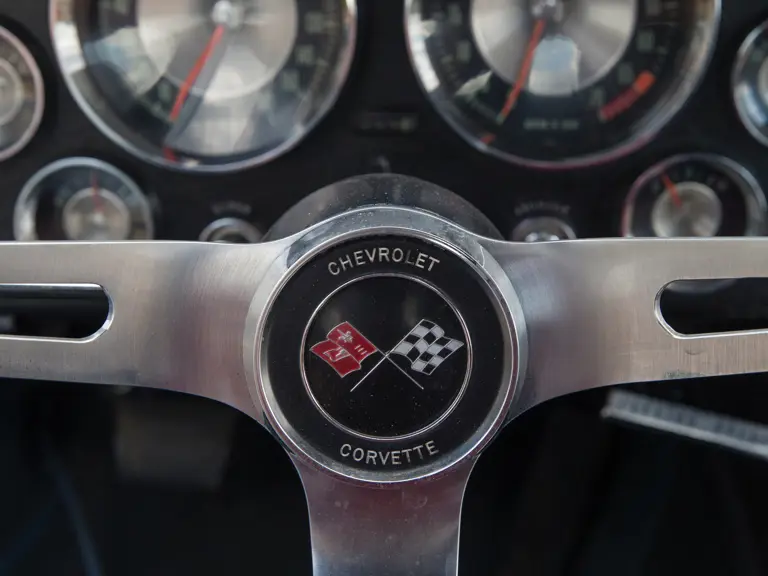
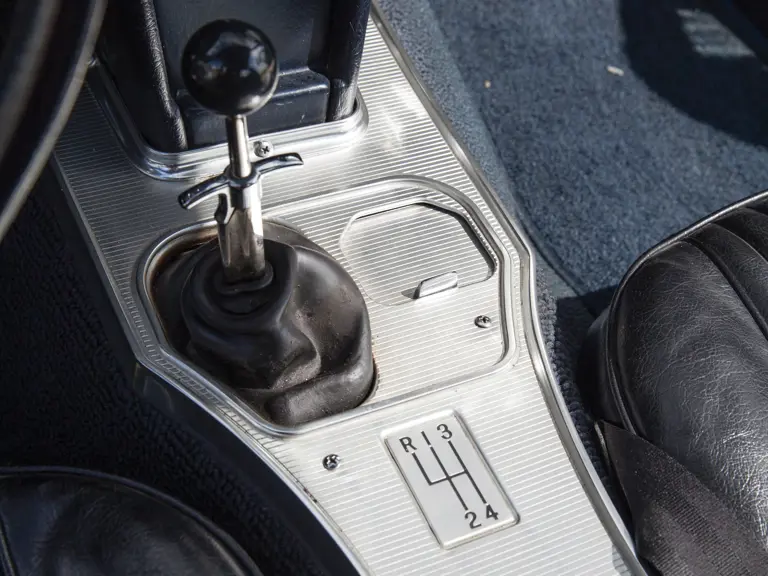

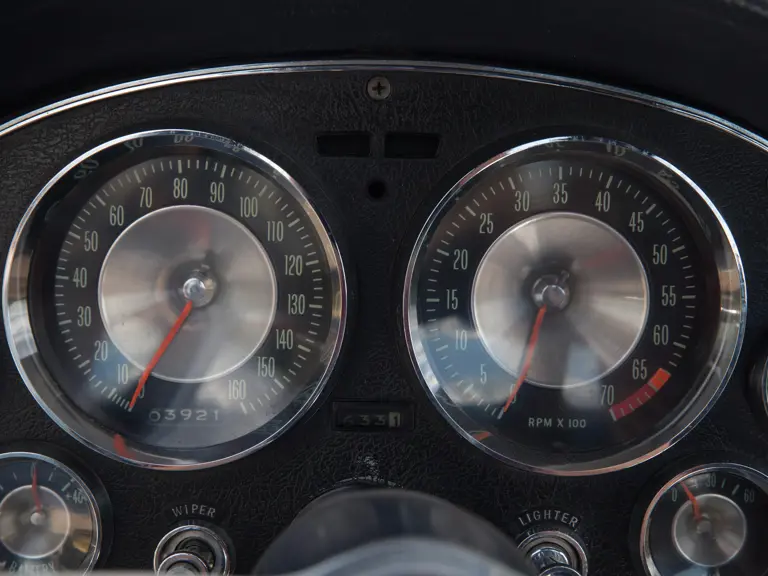
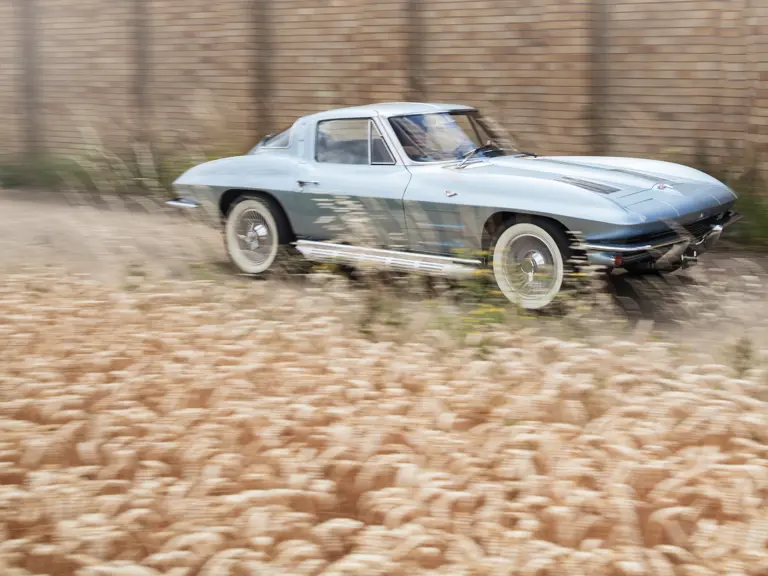
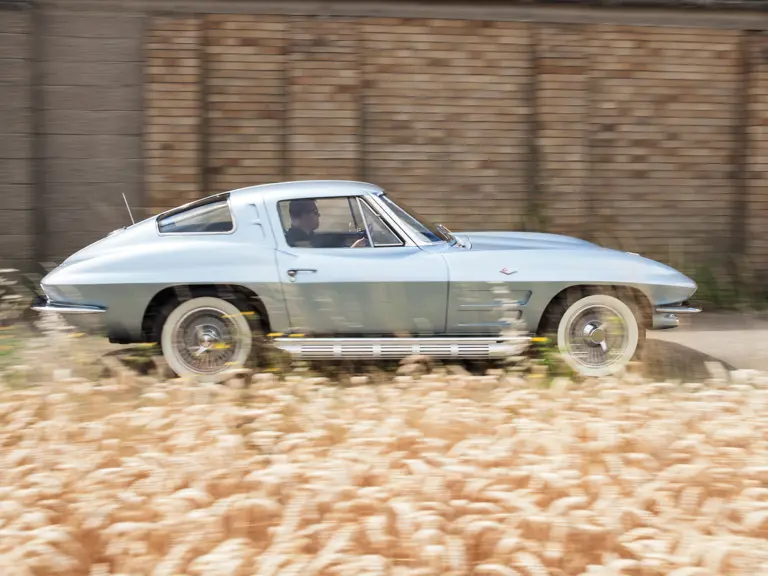
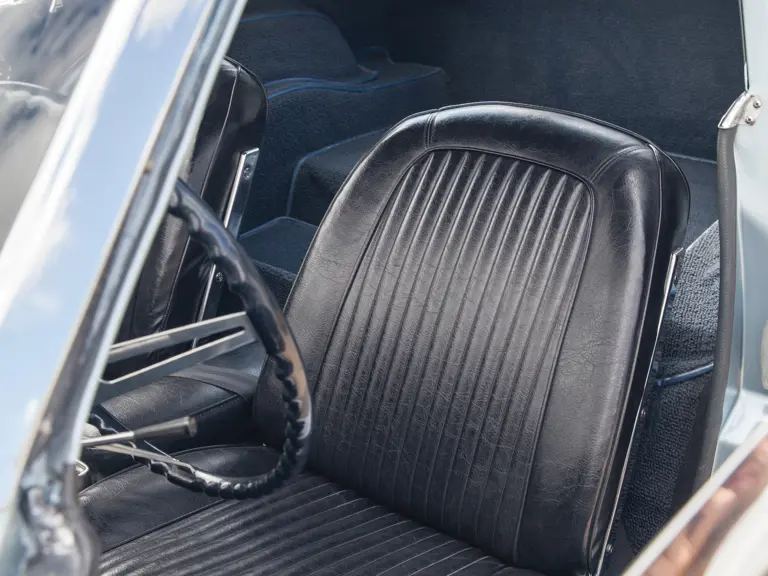
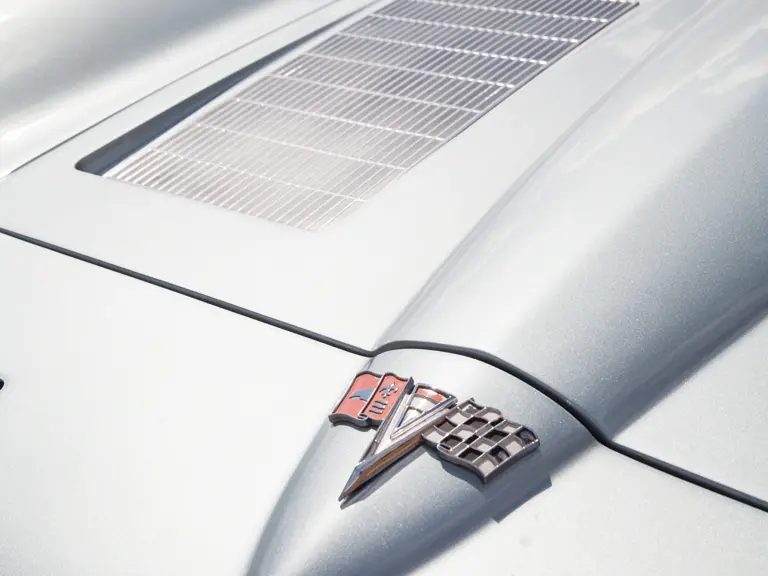

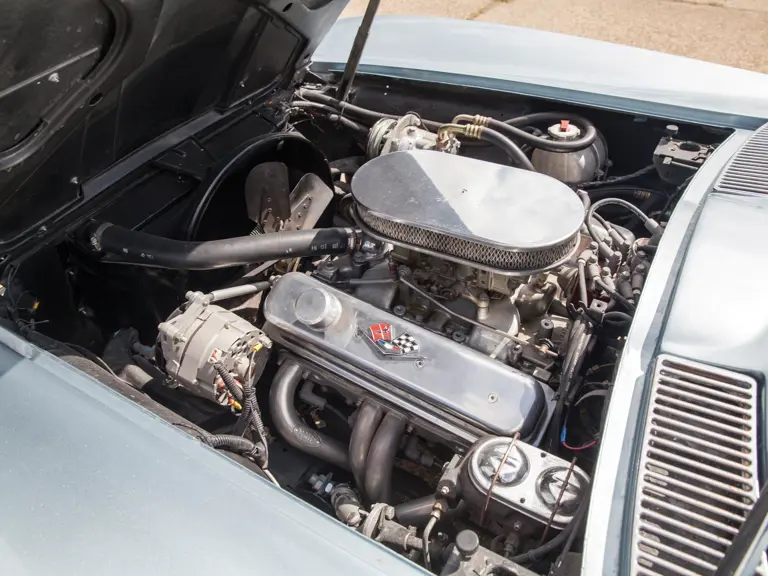
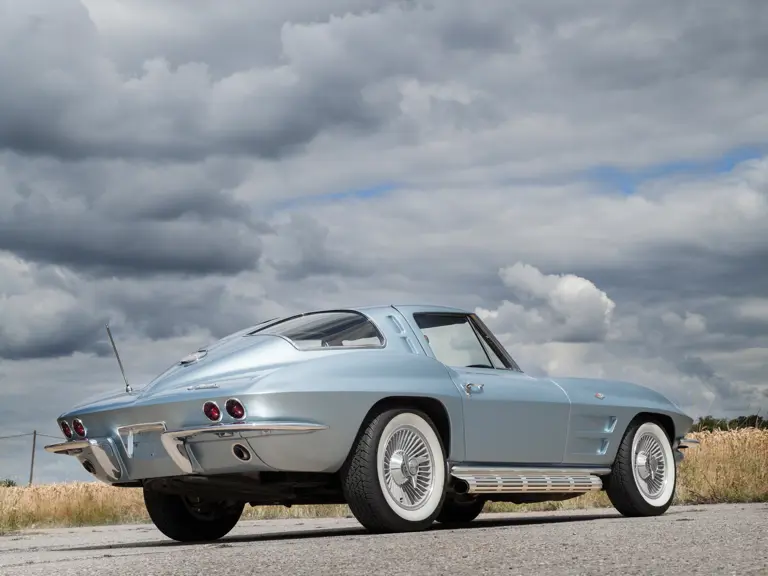
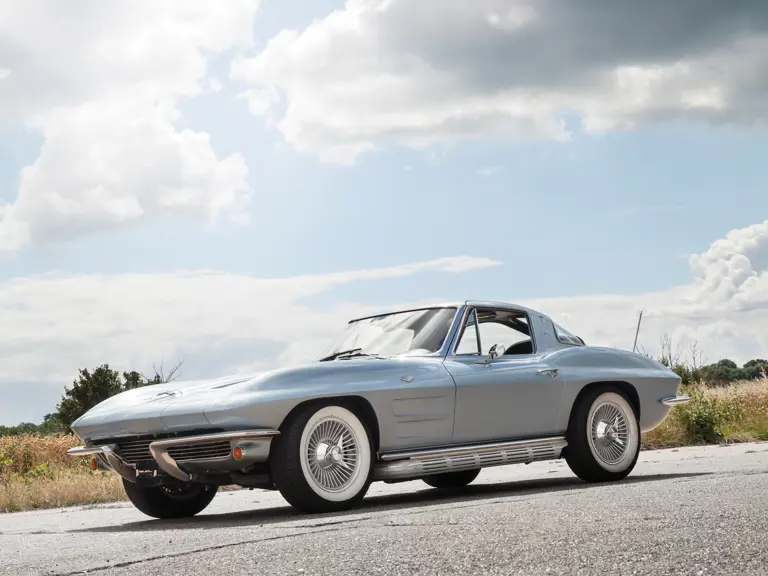

 | London, United Kingdom
| London, United Kingdom
